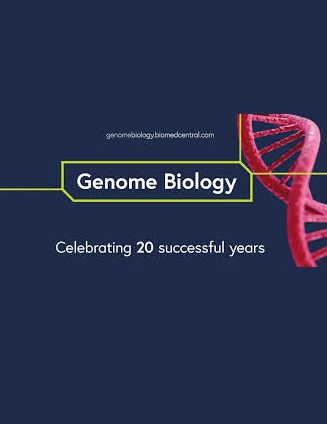Abundant and metabolically flexible bacterial lineages underlie a vast potential for rubisco-mediated carbon fixation in the dark ocean
IF 10.1
1区 生物学
Q1 BIOTECHNOLOGY & APPLIED MICROBIOLOGY
引用次数: 0
Abstract
Rubisco is among the most abundant enzymes on Earth and is a critical conduit for inorganic carbon into the biosphere. Despite this, the full extent of rubisco diversity and the biology of organisms that employ it for carbon fixation are still emerging, particularly in unlit ecosystems like the deep sea. We generate fifteen metagenomes along a spatially resolved transect off the California coast and combine them with globally distributed public data to examine the diversity, distribution, and metabolic features of rubisco-encoding organisms from the dark water column. Organisms with the form I and/or form II rubisco are detected in the vast majority of all samples and comprise up to around 20% of the binned microbial community. At 150 m and below, the potential for autotrophic carbon fixation via rubisco is dominated by just two orders of gammaproteobacteria and SAR324, encoding either the form I or II rubisco. Many of these organisms also possess genes for the oxidation of reduced sulfur compounds, which may energetically support carbon fixation. Transcriptomic profiling in the epi- and mesopelagic suggests that all major forms of rubisco (I, II, and III) can be highly expressed in the deep water column but are not done so constitutively, consistent with metabolic flexibility. Our results demonstrate that the genetic potential to fix carbon via rubisco is significant and spatially widespread in the dark ocean. We identify several rubisco-encoding species that are particularly abundant and cosmopolitan, highlighting the key role they may play in deep-sea chemoautotrophy and the global marine carbon cycle.丰富且代谢灵活的细菌谱系为深海中rubisco介导的碳固定提供了巨大的潜力
Rubisco是地球上最丰富的酶之一,是无机碳进入生物圈的关键通道。尽管如此,rubisco多样性的全部范围和利用它进行碳固定的生物生物学仍在不断出现,特别是在像深海这样没有光照的生态系统中。我们沿着加利福尼亚海岸的一个空间分辨样带生成了15个宏基因组,并将它们与全球分布的公共数据相结合,以检查来自暗水柱的rubisco编码生物的多样性,分布和代谢特征。在绝大多数样品中检测到形式为I和/或形式为II的rubisco的生物体,占分类微生物群落的20%左右。在150米及以下,通过rubisco进行自营养碳固定的潜力仅由γ变形菌和SAR324两个目控制,它们编码形式为I或II的rubisco。这些生物中的许多还具有氧化还原硫化合物的基因,这可能大力支持碳固定。外表皮和中表皮的转录组学分析表明,所有主要形式的rubisco (I, II和III)都可以在深水柱中高度表达,但不是组成性表达,这与代谢灵活性一致。我们的研究结果表明,通过rubisco固定碳的遗传潜力在黑暗海洋中是显著的,并且在空间上广泛存在。我们确定了几个rubisco编码物种,它们特别丰富和世界性,突出了它们在深海化学自养和全球海洋碳循环中可能发挥的关键作用。
本文章由计算机程序翻译,如有差异,请以英文原文为准。
求助全文
约1分钟内获得全文
求助全文
来源期刊

Genome Biology
Biochemistry, Genetics and Molecular Biology-Genetics
CiteScore
21.00
自引率
3.30%
发文量
241
审稿时长
2 months
期刊介绍:
Genome Biology stands as a premier platform for exceptional research across all domains of biology and biomedicine, explored through a genomic and post-genomic lens.
With an impressive impact factor of 12.3 (2022),* the journal secures its position as the 3rd-ranked research journal in the Genetics and Heredity category and the 2nd-ranked research journal in the Biotechnology and Applied Microbiology category by Thomson Reuters. Notably, Genome Biology holds the distinction of being the highest-ranked open-access journal in this category.
Our dedicated team of highly trained in-house Editors collaborates closely with our esteemed Editorial Board of international experts, ensuring the journal remains on the forefront of scientific advances and community standards. Regular engagement with researchers at conferences and institute visits underscores our commitment to staying abreast of the latest developments in the field.
 求助内容:
求助内容: 应助结果提醒方式:
应助结果提醒方式:


